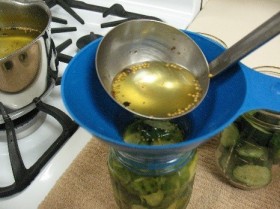If Easter egg decorating is on your list of activities this spring, play it safe when handling fresh and hard cooked eggs! To avoid the possibility of foodborne illness, fresh eggs must be handled and stored correctly. Even eggs with clean, shells with no cracks may occasionally contain bacteria called Salmonella that can cause an intestinal infection. And, once eggs have been cooked, food safety rules apply for proper handling, serving and storing.
Food safety tips if you plan to eat the dyed eggs later:
- Start by washing hands with warm water and soap for 20 seconds before and after food handling. Wash hands during each step of handling eggs before dyeing them.
- Hard-cook, dye, and refrigerate the eggs within two hours.
- Use only food safe natural or commercial dyes.
- Non-refrigerated Easter eggs that are used as decorations should not be eaten.
- Hunt eggs for 2 hours or less, 1 hour if the outdoor temperature is 90°F or higher.
- Hunt only eggs that have been refrigerated with non-cracked shells before hiding.
- Hide eggs in areas that are clean, protected from dirt, pets and other highly possibly sources of large numbers of bacteria. Make sure the area has not been treated with various lawn and/or insect control chemicals.
- Wash “found” eggs and refrigerate right away at 40°F or below.
- Eggs must be eaten within seven days of cooking.
Food safety tips for blown out egg shells used in decorating:
- Use only eggs that have been kept refrigerated and are not cracked.
- Before blowing out eggs, wash the eggs in hot water. Then rinse them in a solution of 1 teaspoon liquid chlorine bleach per half cup of water.
- Be careful not to get any of the raw egg into your mouth or on your lips.
- The contents blown out of the eggs could be used, but they must be refrigerated right after being blown out and used within 2-4 days.
- These contents should be used only in foods that are cooked thoroughly before eating, such as breads and cakes.
Freezing eggs:
The contents of raw whole eggs may be frozen for later use. To freeze raw whole eggs:
Thoroughly mix yolks and whites. Do not whip in air. To prevent graininess in the yolks, add 1½ tablespoons sugar, 1½ tablespoons corn syrup OR ½ teaspoon salt per cup whole eggs, depending on intended use. Strain through a sieve, or colander to improve uniformity. Package, allowing ½ inch headspace. Seal and freeze. Another method of freezing whole egg mixture is to use ice trays. Measure 3 tablespoons of egg mixture into each compartment of an ice try. Freeze until solid. Remove frozen cubes, and package in moisture-vapor resistant containers. Seal and freeze. Three tablespoons of the egg mixture (one cube) equals one whole egg
###
References: The Incredible Egg website, American Egg Board. Easter & Egg Safety, at https://www.incredibleegg.org/easter/easter-egg-safety/
The Partnership for Food Safety Education. Egg-stra Care for Spring Celebrations, at http://www.fightbac.org/egg-stra-care-for-spring-celebrations/
University of Georgia Cooperative Extension. Freezing Animal Products. Eggs. In So Easy to Preserve, 6th Edition, 2014, p. 298.

You must be logged in to post a comment.